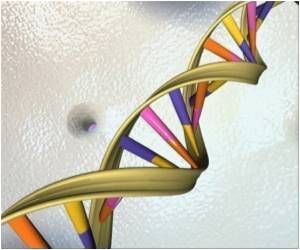According to researchers, mass spectrometry, can also now allow biologists to see for the first time exactly how drugs work inside living cells to kill infectious microbes.

"The development of antibiotics has been stalled for several decades and many infectious microbes have become drug-resistant," said the study's senior investigator, Dr. Kyu Y. Rhee, an infectious disease expert who is an associate professor of medicine in the Division of Infectious Diseases and associate professor of microbiology and immunology at Weill Cornell Medical College.
"We must restock the antibiotic pipeline and our study findings provide a powerful new approach for doing just that," Dr. Rhee stated.
The need to develop new antibiotics is perhaps nowhere more pressing than for the treatment of tuberculosis, TB, which is the single leading bacterial cause of death worldwide, and with the emergence of now total drug resistance, an unchecked global public health emergency.
Most TB drugs-as well as antibiotics for other infections-were developed through a combination of empirical approaches. However, it had been impossible to know what the drug was doing inside the bacteria, said Dr. Rhee.
That situation has now changed. Dr. Rhee and his colleagues, who include investigators from the National Institutes of Health, applied modern technologies that stem from use of mass spectrometry to directly visualize what happens when these drugs infiltrate TB cells.
Advertisement
This study is the first to show mass spectrometry can also be adapted to understand the action of antibiotics on living, intact bacterial cells.
Advertisement
The drug was thought to work by inhibiting an enzyme used by bacteria to synthesize folates, an essential class of nutrients that humans acquire by eating, but bacteria must make on their own.
"Many thus believed that the drug interfered with folate synthesis in the TB bacterium by functioning as an occlusive plug that blocked this pathway," said Dr. Rhee.
However, researchers actually found, while it is true PAS prevents the utilization of the natural precursors used to synthesize folates, once inside TB, PAS itself also turns toxic.
"PAS is an agent that uses the TB cell's machinery to turn it into a poison. Thus, it doesn't simply kill the cell by stopping its food supply, it also morphs into a lethal drug," Dr. Rhee explained.
The researchers also tested a different drug, sulfonamide (sulfa), which is an 80-year-old class of antibacterial agents known to defeat many infections, but not TB successfully.
"Scientists thought sulfa didn't penetrate TB cells, but we witnessed, using mass spectrometry, that it did, in fact, enter the bacteria. But that once inside, TB bacteria were able to degrade the drug," Dr. Rhee stated.
This finding suggests to researchers that it might be possible to modify the sulfa molecule so that it can withstand degradation by TB bacteria.
"Both of these findings were completely unexpected. The study findings show us that sometimes there is a profound disconnect between what we think a drug is doing and how it actually works inside cells," said Dr. Rhee.
"The power of mass spectrometry is now evident, and we can't wait to use it to test all of the current cocktail of drugs used to treat TB to find ways to improve them," Dr. Rhee said.
"Best of all will be the use of this tool to design and test the much-needed next generation of effective anti-TB agents," the researcher added.
The study has been published in early online edition of Science.
Source-ANI















